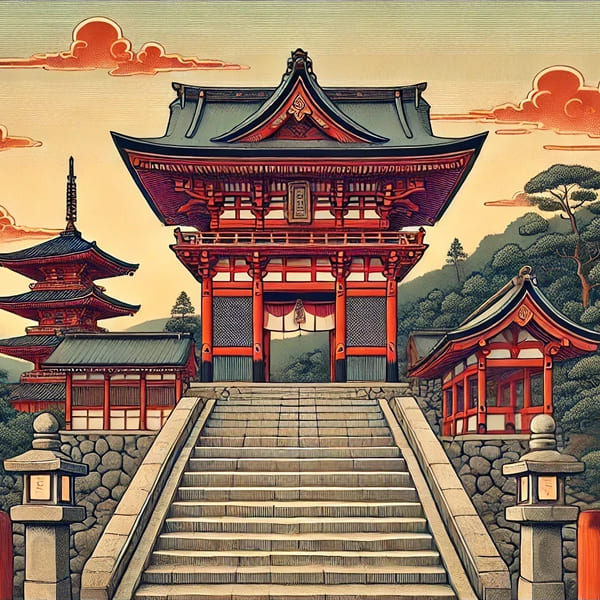Hachiman: Japan’s Divine Protector and the Deified Spirit of Emperor Ōjin

Contents
What if the spirit of a wise emperor became a god—guiding warriors, protecting nations, and appearing as a dove of peace?
In the rich tapestry of Japanese mythology and history, few figures embody both divine power and human legacy like Hachiman. Once the revered Emperor Ōjin of the ancient Yamato period, he was later deified as the god of war, protection, and prosperity—a celestial guardian of emperors, monks, and samurai alike.
From sacred mountaintop oracles to battlefield prayers and peaceful doves, the story of Hachiman reveals a rare blend of spirituality, heroism, and cultural fusion. This article traces the mythic journey of how a mortal ruler became one of Japan’s most beloved gods.
The Deification of Emperor Ōjin into Hachiman
After Emperor Ōjin passed away, the people began to worship his spirit as the divine figure Hachiman, honoring his virtues and achievements. The first Hachiman shrine was established in Usa (modern-day Ōita Prefecture), where Usa Hachiman-gū became the spiritual center for Hachiman worship throughout Japan.
In the 8th century, during the troubled construction of the Great Buddha at Tōdai-ji Temple in Nara, a divine oracle was received from Usa Hachiman-gū:
“I shall go to the capital and protect the nation.”
Moved by this powerful message, the imperial court welcomed Hachiman to the capital to aid in the sacred project.
The Arrival of Hachiman: A White Horse and a Holy Procession
Legend tells that Hachiman arrived in human form riding a white horse, captivating the capital’s people with his divine presence. Witnesses whispered, “A god walks among us.” In actuality, Hachiman was carried in a mikoshi (portable shrine), but the white horse remains a powerful symbol of this celestial arrival.
Hachiman’s blessing helped complete the Great Buddha (Daibutsu), a monumental project that had been plagued by setbacks. This divine intervention strengthened his reputation as a celestial protector of the realm, reinforcing the belief that Hachiman was not only a former emperor but a living guardian of Japan’s spiritual destiny.
This miraculous journey became a cherished story in Japanese folklore.
Hachiman Daibosatsu: The Divine Bridge Between Shinto and Buddhism
With the rise of Shinbutsu-shūgō—the fusion of Shinto and Buddhism—Hachiman evolved into Hachiman Daibosatsu (“Great Bodhisattva Hachiman”). Though originally a Shinto deity, he was embraced in Buddhist tradition as a guardian of the Dharma.
Hachiman appeared in dreams to monks, offering divine guidance, and continued to protect the nation spiritually and symbolically.
Hachiman and the Samurai: Guardian of the Genji Clan
During the late Heian period, as Japan entered the age of the samurai, Hachiman became the protector of warriors. The powerful Genji (Minamoto) clan, led by Minamoto no Yoritomo, revered Hachiman and built Tsurugaoka Hachimangū Shrine in Kamakura as their spiritual base.
Before going into battle, samurai prayed to Hachiman:
“Grant us true aim and victory.”
Legend says that when an arrow hit its mark, the warriors believed it was Hachiman’s divine intervention, giving them the courage to fight bravely.
The White Dove: Hachiman’s Peaceful Messenger
In many stories, Hachiman appears as a white dove, a symbol of peace and divine protection. In one legend, a white dove landed at a shrine just before an attack on a village. An elder declared, “The god protects us.” The following day, the enemy withdrew, and the village was saved.
This imagery reinforces Hachiman’s dual nature—a war god who also brings peace and hope.
Hachiman Shrines and His Enduring Legacy
Today, Hachiman Shrines can be found across Japan. Worshipped as Hachiman-sama, this beloved deity continues to offer blessings for protection, good luck, and the safety of communities.
The legacy of Hachiman is more than a myth—it is a powerful symbol of Japan’s spiritual history, bridging emperors, warriors, and everyday people with the divine.
It continues to be a symbol of harmony between the spiritual and the historical in Japanese culture.